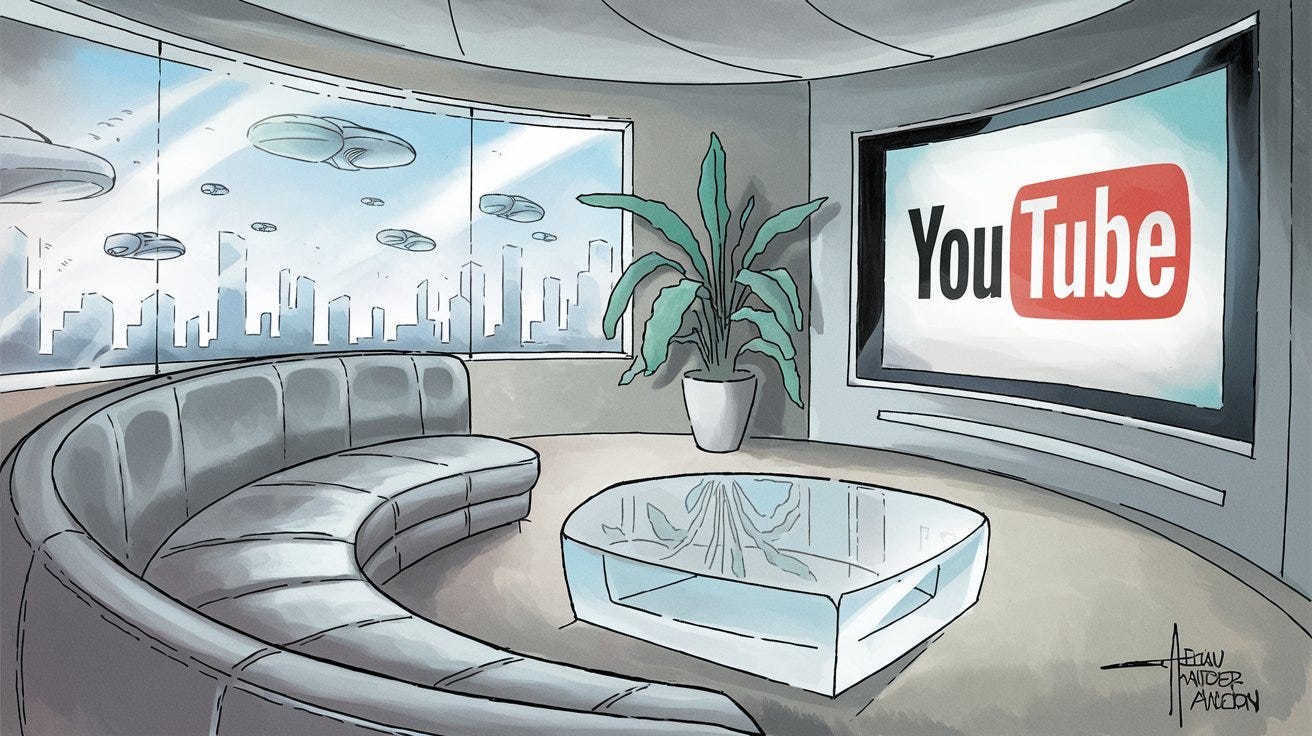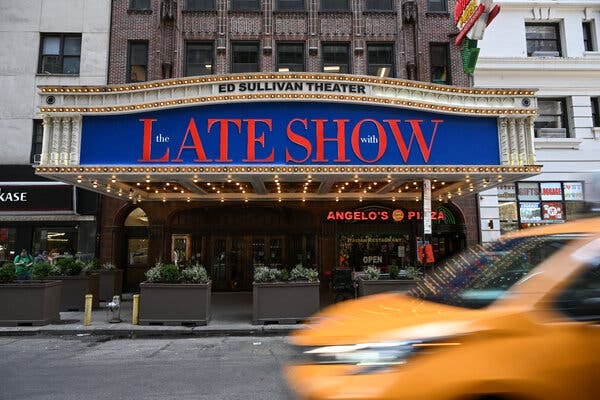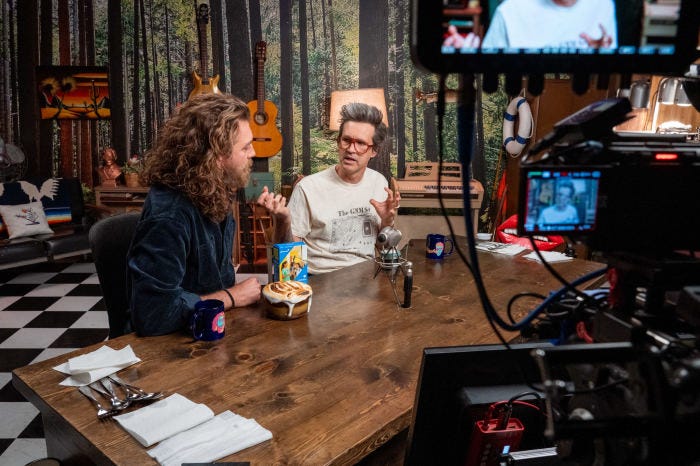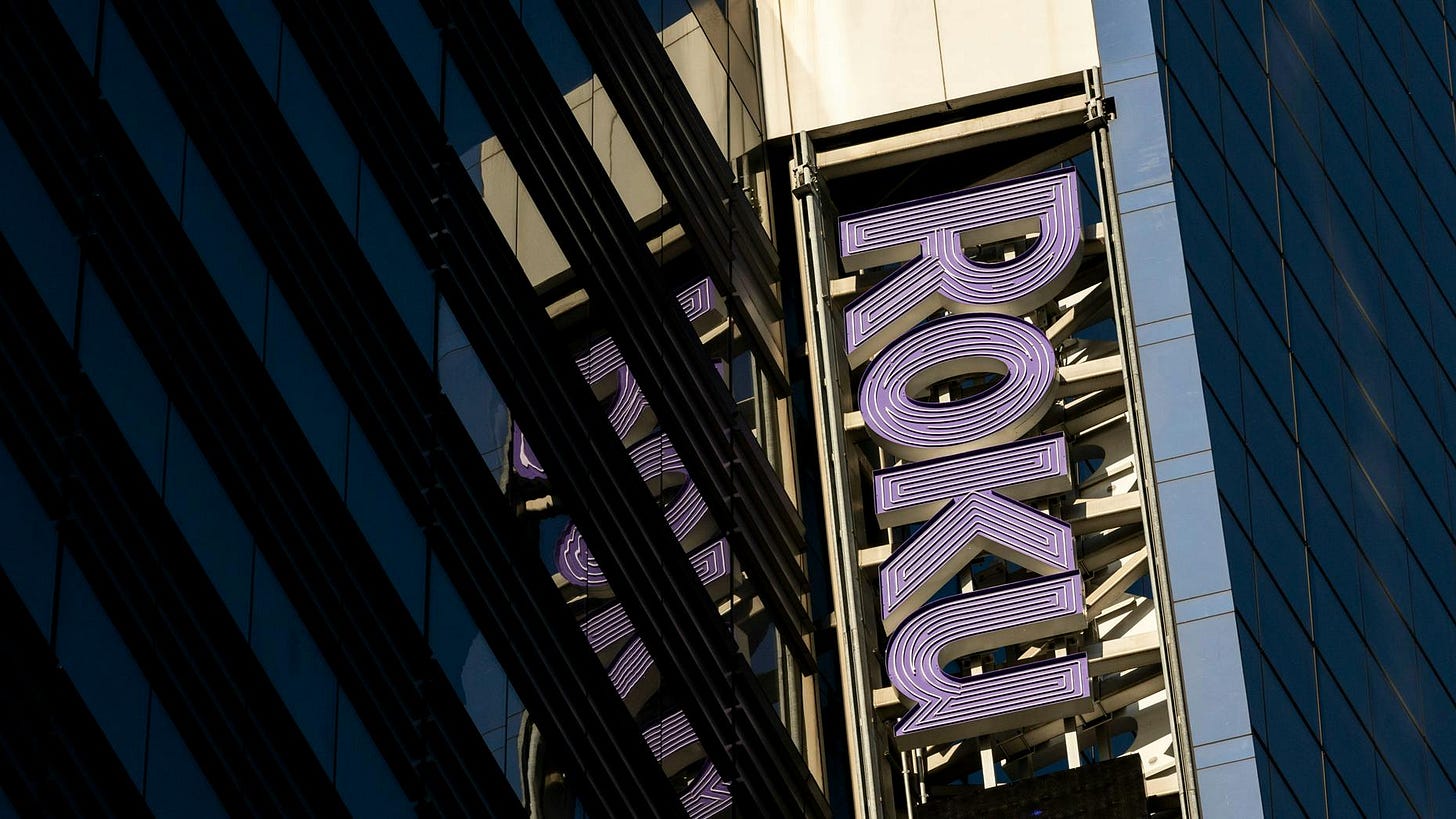AI: YouTube goes mainstream on TVs in homes. RTZ #788
...a key clue on where the AI media puck is going fast
When the history books are written on 21st century media, one likely lesson to be underlined that Hollywood was fundamentally changed by the Medium and not the Message. To paraphrase Marshall McLuhan.
And that was before AI and its creation ‘AI Slop’ becomes the next wave of content across all our screens soon in this AI Tech Wave. The media puck is moving fast across those screens, to paraphrase another popular saying.
This comes to mind as Google’s YouTube crosses a milestone in mainstream adoption, with its widest and deepest viewership on centered around the TV in over a hundred million US households, from its roots on PCs and smartphones.
Not that the latter is less popular, both in long and short form videos, popularized of course by TikTok, and then fast emulated by YouTube Shorts and Meta Reels on Instagram and other Meta properties.
I’ve written extensively about how Google YouTube is transforming itself at the apex of ‘TV’ viewership, changing viewing habits, and driving a multi-hundred billion dollar ‘Influencer’ and ‘Creator’ video production economy. Of course right along with Netflix for more ‘produced’ TV far. These two services are the bookends to the current media landscape, closing in on traditional media companies and their wares in the middle. Most from Hollywood. And all of it changing AI Data as we’ve known it thus far. (Box 4 below).
The WSJ has an update on Google YouTube’s latest numbers in “How YouTube Won the Battle for TV Viewers”:
“A generation that grew up watching YouTubers on tablets and phones have migrated to TVs, and Hollywood is losing ground.”
Yes, and it’s jostling current TV as we’ve just seen with the new around Stephen Colbert’s Late Show at CBS.
Lot of that and similar content is more conveniently watched its bite-size on YouTube, TikTok and beyond. That more than politics is likely the driver of that change.
As the WSJ continues:
“After pioneering video that we watch on our laptops and phones, YouTube is now the king of Hollywood’s home turf: the TV.”
“YouTube became the most-watched video provider on televisions in the U.S. earlier this year, and its lead has only grown, according to Nielsen data. People now watch YouTube on TV sets more than on their phones or any other device—an average of more than one billion hours each day. That is more viewing than Disney gets from its broadcast network, dozen-plus cable channels and three streaming services combined.”
“In response, YouTube’s influencers, producers and performers—collectively known as creators—are making longer, higher-quality videos that appeal to families and groups of friends watching in their living rooms. YouTube is also rapidly improving its TV app, adding new features to try to keep people watching its free videos longer. (Separately, it also sells YouTube TV, an $83-a-month bundle of channels akin to cable.)
That YouTube TV in itself is changing old Cable TV as we’ve known it.
And the changes are just getting started.
“In true Silicon Valley style, the Google-owned company isn’t just looking to extend its lead on TVs, but to dominate the future of entertainment.”
“Our goal is for the YouTube app to be people’s way into as much of the universe of video content that exists on the internet as can be,” said Christian Oestlien, YouTube’s vice president of product management for connected TV. One way the company is considering keeping people glued to YouTube on their TVs longer, he said, is through personally customized content feeds, like highlights from players on a fantasy football team.”
To be sure, YouTube has come a long way in two decades, accelerated by earlier tech waves.
“For most of the past 20 years since it was founded, YouTube was an alternative to television, a home for cheap, low-quality ephemera like how-to videos and skateboard tricks that Hollywood worried was distracting people from real entertainment.”
“YouTube started as a website to watch videos on PCs. It made its way onto televisions in 2010, but the interface was clunky. By the 2020s, a generation that grew up watching internet videos alone on their phones and tablets began watching YouTube together in their living rooms and with their own children. It didn’t hurt that as prices rose for Netflix and Disney+, YouTube has remained free.
“In the process, it became a media juggernaut. MoffettNathanson analysts estimate YouTube’s revenue last year was $54.2 billion, which would make it No. 2 among entertainment companies, behind only Disney.”
And it’s all driven by software. Deterministic machine learning earlier, now increasingly probabilistic ‘AI’ powered:
“Now, even the smallest decisions YouTube executives make about how their apps are designed or how their algorithm recommends content can have seismic impacts on global pop culture.”
“Many young people viewing YouTube on their TVs are perfectly happy to watch amateurs play videogames, spout opinions and share every detail of their personal lives. But increasingly, they are also watching the type of shows that used to be found exclusively on broadcast or cable channels: sketch comedy, documentaries, animation and talk shows. The latter is disappearing from traditional networks, as evidenced by CBS’s decision to cancel its Stephen Colbert late-night show.”
Yes, it’s jostling current TV as we’ve just seen with the news around Stephen Colbert’s Late Show at CBS.
The old is becoming new again, starting with talk shows of course. As the WSJ tells the tale:
“‘Good Mythical Morning’ on YouTube is a lot like an old-fashioned network talk show. Every weekday, hosts Rhett McLaughlin and Charles Lincoln Neal—known to their fans as Rhett & Link—joke around with each other and their crew, perform blind taste tests and take part in bizarre contests.”
“What started nearly 20 years ago with the two friends working alone in North Carolina has grown into a channel with 19.3 million subscribers. While L.A. is bleeding jobs in traditional film and TV production, Rhett & Link employ some 100 people in a complex just outside the city that houses stages, a writers’ room, a prop-making office and interns.”
Just like the traditional TV shows, only a lot cheaper. For now.
“TVs became the most popular screen for people to watch “Good Mythical Morning” late last year and now account for 53% of all viewing. The hosts say longtime fans have grown up watching the show alone in their childhood bedrooms and now watch with a partner or friends in their own living rooms.”
“There’s this phenomenon of, ‘Oh wait, there’s the YouTube icon on this television I just mounted in my first apartment. I can do this here now,’” said Neal.”
“Similarly, viewership on TVs surpassed mobile late last year for the popular YouTube interview show “Hot Ones,” on which celebrities like Billie Eilish and Kevin Hart answer questions as they eat increasingly spicy chicken wings. Dhar Mann Studios says TVs became the most popular device for viewers of its inspirational videos for kids in early 2024, and about 54% now watch that way.”
Coming back to the Late Night Show by Stephen Colbert, it’s likely its Star and crew might find different opportunities as the NYTimes lays it out in “Canceling ‘The Late Show’ Is Bad News for Late-Night TV, Not for Stephen Colbert”:
“Getting canceled may end up being the best thing that ever happened to Stephen Colbert.”
“Many people found solace in watching Colbert poke fun at the news every night. That audience will probably go elsewhere. It might be to Fallon on NBC or more likely Kimmel on ABC, but an increasing number of viewers will flock to YouTube or a podcast. When they seek out these platforms, I would not be surprised if they eventually find a new version of Stephen Colbert there.”
Oh, and did I forget to mention? YouTube is the biggest Podcast platform out there, with over a billion monthly viewers as Variety summarizes:
“Podcasts started as an audio-only phenomenon. But now YouTube — the world’s biggest video platform — might be the biggest platform for podcasts.”
“According to the Google-owned video giant, YouTube now has more than 1 billion monthly viewers for podcast content worldwide. In 2024, users watched more than 400 million hours of podcasts monthly on living-room devices, the company said.”
Bigger than Spotify, Apple and other usual suspects.
It’s not out of the range of possibilities that Stephen Colbert and others may find new homes. Possibly at YouTube, Netflix, Apple or even TikTok in whatever form it comes alive again in the US. Past its current geopolitical football game.
The WSJ piece above is worth reading in full.
The reality is that TV as we’ve known it is getting redone. Not just in the programming, but also in the many screens like that we watch it on in the world of TV.
The Information’s latest update on how Roku is trying to redefine the opening screen on our TVs is another tale that’s part of the picture. And worth reading in full.
But the broader, bigger story here is that AI is changing TV.
Exponentially.
With a lot of old becoming new, and of course a lot of new, new stuff to come. And AI generated content has barely gotten started this AI Tech Wave. Watching Google’s YouTube and its peers for now, provides a lot of the new clues. Stay tuned.
(NOTE: The discussions here are for information purposes only, and not meant as investment advice at any time. Thanks for joining us here)











